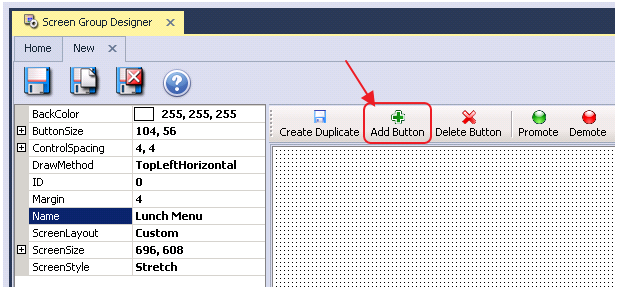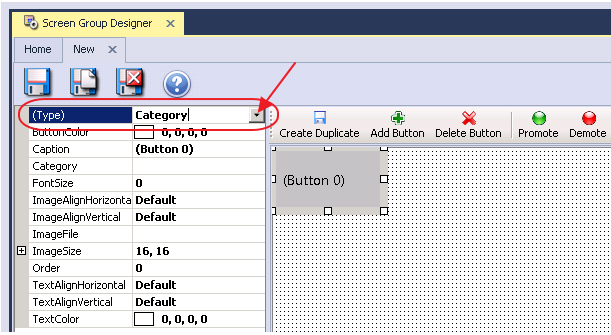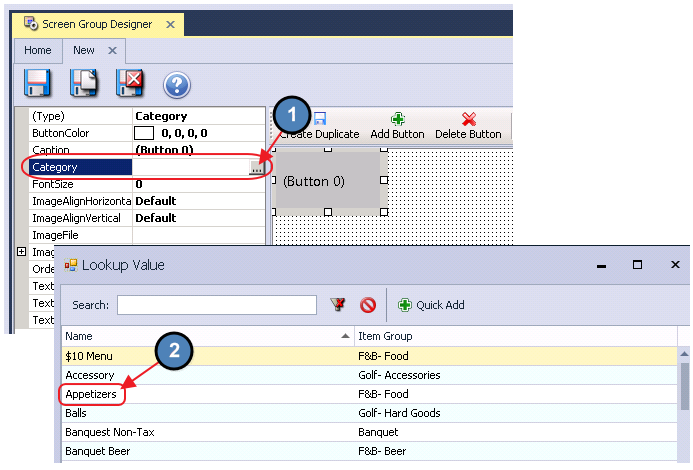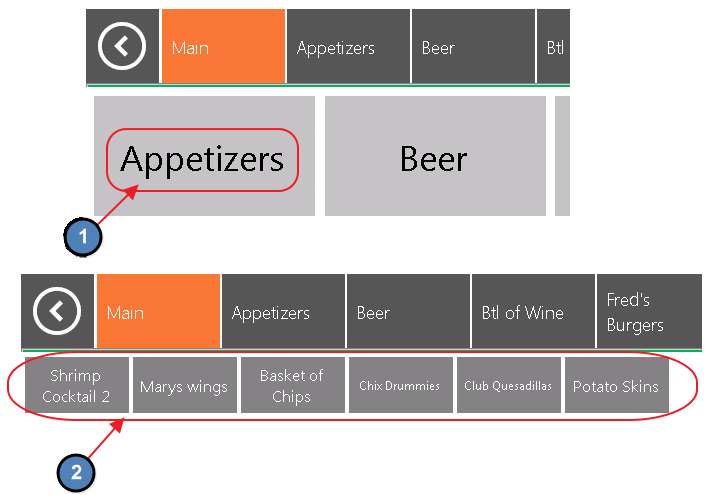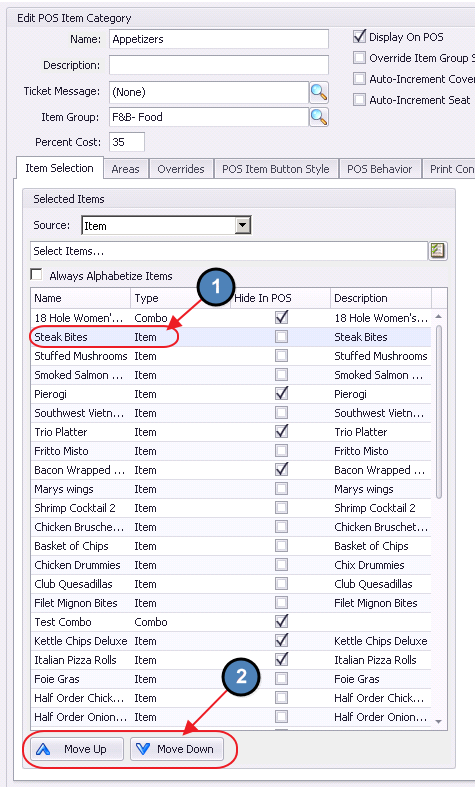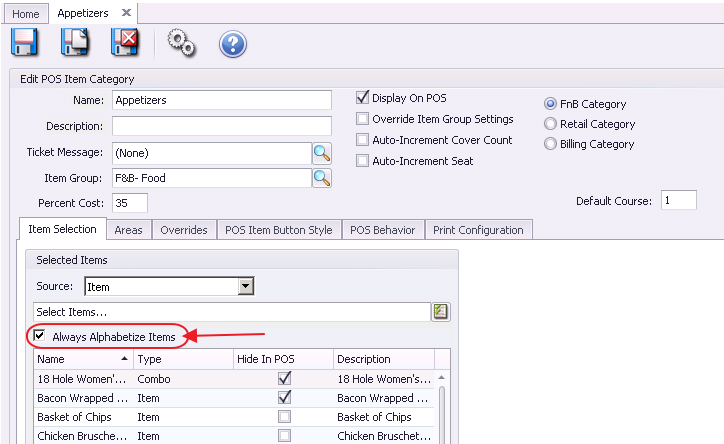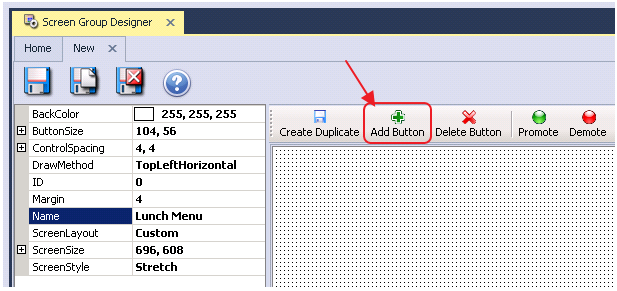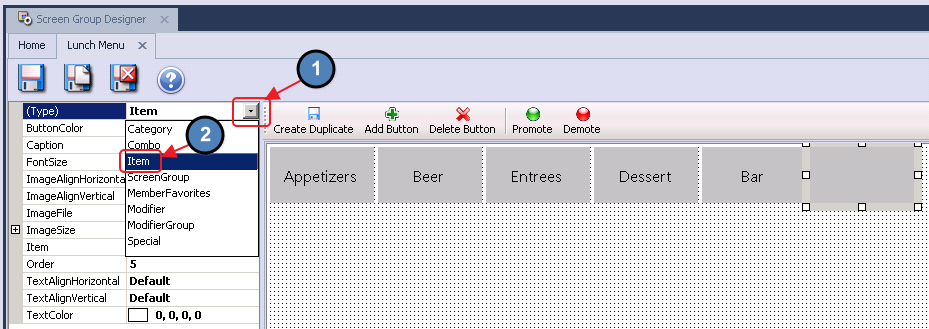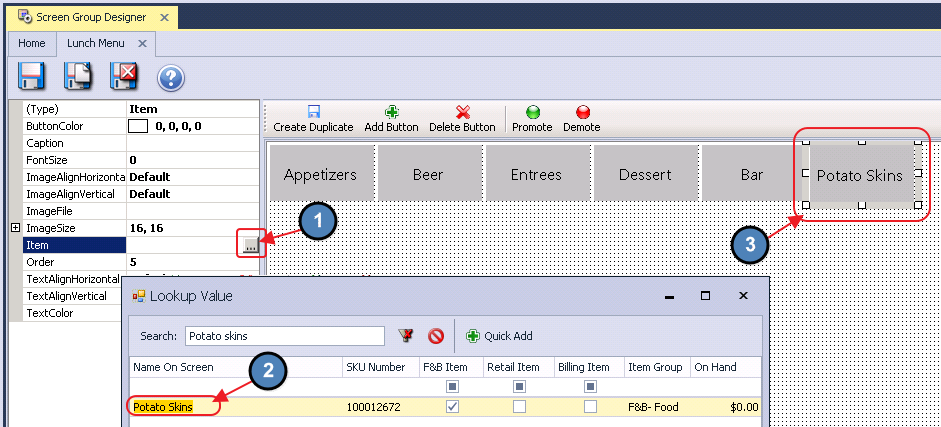| Table of Contents | ||||||||||
|---|---|---|---|---|---|---|---|---|---|---|
|
...
3) The primary functions associated with managing Screen Groups, creation, formatting, assigning, etc., are embedded in the Screen Group setup screen. This screen can be accessed by double-clicking on an existing Screen Group, or clicking the New button.
...
Creating a New Screen Group
To create a new Screen Group:
1) Navigate to the Screen Group Designer Grid and perform either of the following options to launch the Screen Group setup screen.
Option 1
Click the New icon on the toolbar.
Option 2
Right-click anywhere on the Screen Group Designer Grid and select New.
...
2) The Screen Group setup screen will launch.
...
3) Enter in a Name for the new Screen Group (Ex: Lunch Menu).
Please Note: The Draw Method (how the screen is spatially organized) for a new Screen Group defaults to Top Left Horizontal. In this Draw Method, Screen Groups cannot be customized.
Please review the Customizing Screen Groups section of this document for an exact explanation on how to customize Screen Groups.
Button Types
As previously mentioned, there are several types of buttons that can be added to Screen Groups. In this section, we will review each type of button.
Category Button
The most commonly used type of button is a Category Button. Selecting a Category Button within the POS will display all Items within the Category. For example, by selecting the Appetizer button, all Items within the Appetizer Item Category will display.
...
For more information on Item Categories, please see our Items Manual.
Creating a Category Button
To create a Category button:
1) Select Add Button.
2) Select Category as the Button Type (Set to Category by default).
3) Select the Category for which you’d like to create a button.
4) This button will link to a screen that automatically displays all Items within the Item Category.
Please Note: It is not necessary to create a Screen Group that includes an individual button for each Appetizer Item, the system does this for you as a result of the Category button.
Option 1
Select the Item and use the Move Up and Move Down buttons to arrange the display order.
Option 2
Check the Always Alphabetize Items check box. If checked, the Items will be listed in alphabetical order on the POS screen.
Item Button
Users can use the Item Button to link a POS button to an individual Item, such as Potato Skins. Some Clubs find it useful to add buttons for frequently ordered Items, such as Diet Coke on their home screens. For more information on Items, please see our Items Manual.
Creating an Item Button
To create a button for an individual Item:
1) Select Add Button.
2) Select Item as the Button Type.
3) Select the Item for which you’d like to create a button.
Modifier Button
Modifier buttons provide the wait staff with quick access to frequently used Modifiers. For example, you might place the As a Meal button on your home screen.
Please note: Most Items have forced Modifiers attached to their setup. However, this option gives users the ability to add frequently used Modifiers that would not typically be attached to an Item. For more information on Item Modifiers, please see our Item Modifier Controls Manual.
Best Practices
System Tools provide an extremely useful toolbox to assist your Management and/or Leads with functions and reporting beyond the normal scope of base level POS usage. Ensure your Management/Lead team is familiar with the functions described within this guide to promote elevated Member and Guest experience, staff guidance and system troubleshooting as required.
...
A: Yes. In addition to the Allow System Tools security role, a separate role, Allow Item Management, is available to differentiate those who have the ability to access System Tools with those who have the ability to edit items within the Items tab of System Tools. By disabling the Allow Items Management role, users who may have access to other System Tools will be unable to make edits to Items within the toolset.
...




